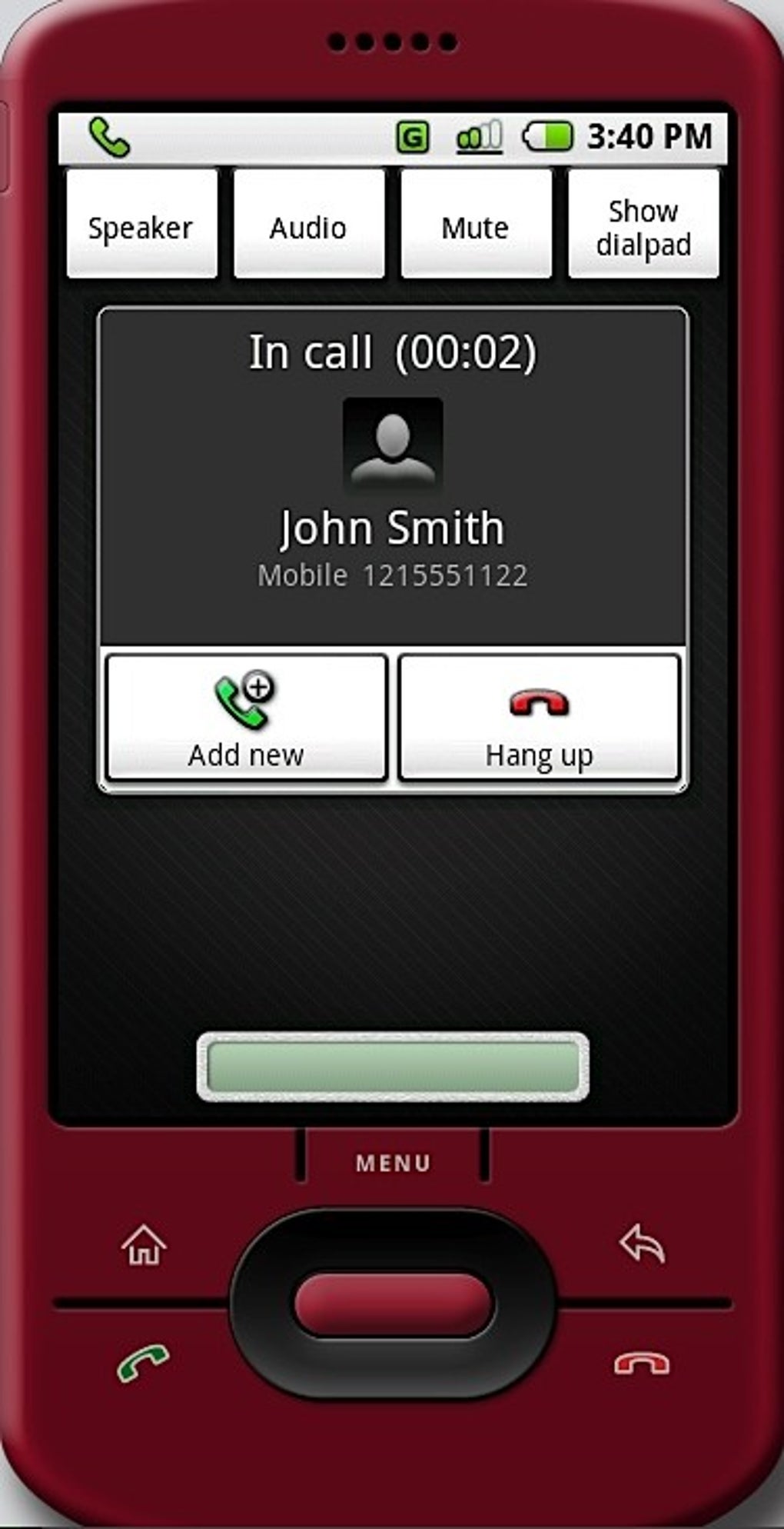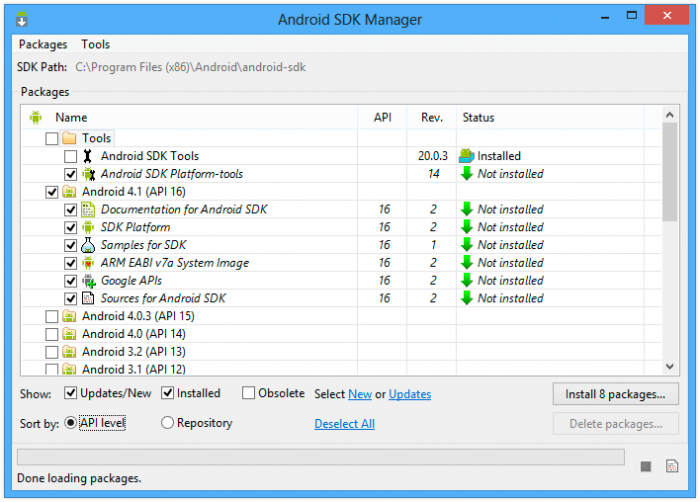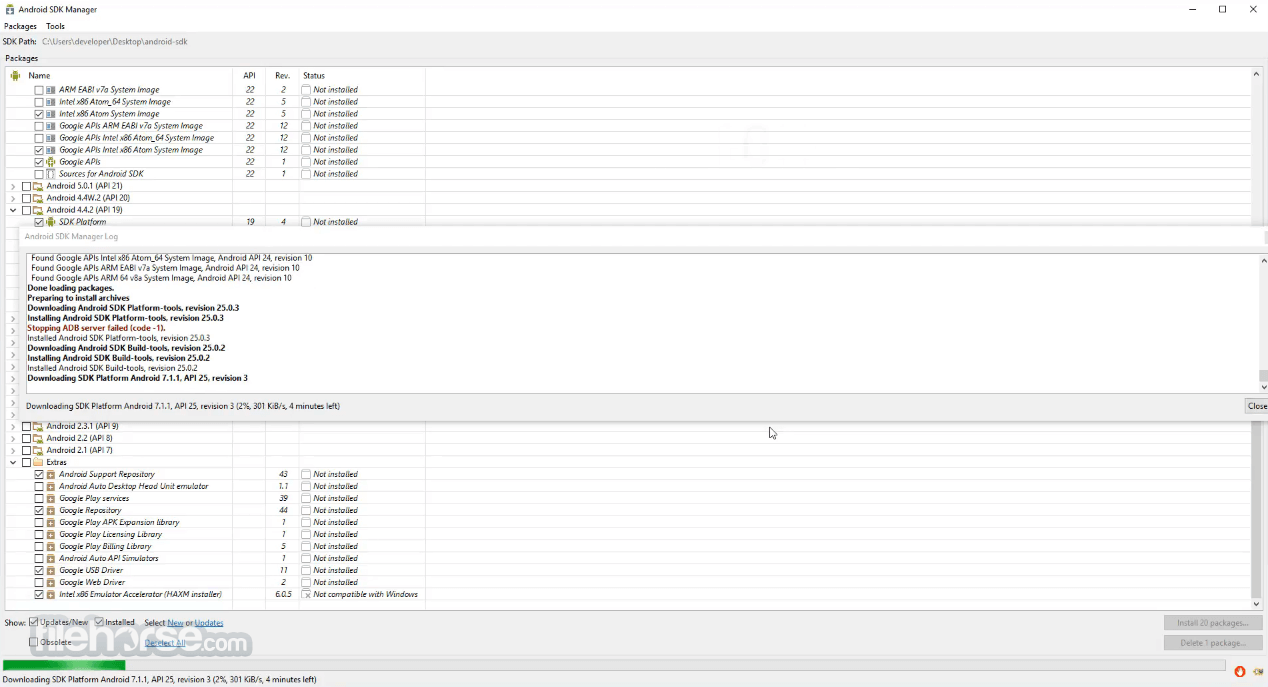Everything You Need to Set Up Your Development Environment
NVIDIA SDK Manager provides an end-to-end development environment setup solution for NVIDIA’s DRIVE and Jetson SDKs for both host and target devices.
From within Eclipse, select Window Android SDK and AVD Manager. On Windows, double-click the SDK Manager.ext file at the root of the Android SDK directory. On Mac or Linux, open a terminal and navigate to the tools/ directory in the Android SDK, then execute: android; To download components, use the graphical UI of the Android SDK and AVD. See full list on androidauthority.com.
Version 1.3.1 is required for all SDKs
Download Android Studio for Mac Download Android Studio for Mac android-studio-ide-2-mac.dmg. Download Android Studio. Before downloading, you must agree to the following terms and conditions. 1.1 The Android Software Development Kit (referred to in the License Agreement as the 'SDK' and specifically including the Android system. Jul 22, 2020 Android SDK Platform Tools zip file is now available for download for Windows, Mac, and Linux systems. In this guide, we will also tell you how you can use the Android SDK Platform Tools to run ADB and Fastboot commands on your Android device.
Highlights

✔ Faster than ever
Fast download and streamlined development environment setup.
✔ Packages and dependencies manager
Orchestrates SDKs, tools and driver combinations, secures incompatibilities of software versions.
✔ Supports both host machine and target devices
Installs SDKs on host machine, flashes NVIDIA HW development platforms, supports different OSes.
✔ Designed for developers
GUI and command line applications.
✔ Easy to get
A single location for multiple software development SDKs and tools.
✔ Know when there is an update
Update notifications to get the latest and greatest from NVIDIA.
SDK Manager deploys NVIDIA DRIVE, Jetson and Clara SDKs.
Learn more about NVIDIA DRIVELearn more about NVIDIA Jetson
Learn more about NVIDIA Clara
What’s New in SDK Manager v1.3:
- Log in process to NVIDIA Developer was changed.
- Added APT configuration verification to reduce install errors.
- Added interactive interface to the command line.
- Bug fixes and stability improvements.
| Host OS | Ubuntu Desktop 16.04 and 18.04 on x64 system |
| Dependencies | Requirements vary depending on the deployed SDK. |
| Hardware | RAM 8GB Internet Connection |
Setting Up The Development Environment:
1. DOWNLOAD
Version 1.3.1 is required for all SDKs
2. INSTALL
- From a terminal window, install the Debian package with the command:
sudo apt install ./sdkmanager-[version].deb - SDK Manager also supports command line interface. Run
sdkmanager --helpto see the options
3. LAUNCH
Android 10 Sdk Download
- From a terminal window, launch SDK Manager with the command:
sdkmanager
Android Sdk For Mac
4. LOGIN & SETUP
From the SDK Manager launch screen, select the appropriate login tab for your account type, NVIDIA Developer (developer.nvidia.com) OR NVONLINE (partners.nvidia.com) and complete the login process.
Select the Product Category you would like to install and follow the steps to complete the installation.
For further detail, consult the SDK Manager User Guide.
Visit SDK Manager Downloads Archive for older versions.
*SDK Manager is using open source software available for download here.
The Android SDK separates tools, platforms, and other components into packages you can download using the SDK Manager. For example, when the SDK Tools are updated or a new version ofthe Android platform is released, you can use the SDK Manager to quickly download them toyour environment.

You can launch the SDK Manager in one of the following ways:
- From Eclipse (with ADT), select Window > Android SDK Manager.
- From Android Studio, select Tools > Android > SDK Manager.
- On Windows, double-click the
SDK Manager.exefile at the root of the AndroidSDK directory. - On Mac or Linux, open a terminal and navigate to the
tools/directory in theAndroid SDK, then executeandroid sdk.
You can select which packages you want to download by toggling the checkboxes on the left, thenclick Install to install the selected packages.
Figure 1. The Android SDK Manager shows theSDK packages that are available, already installed, or for which an update is available.
There are several different packages available for the Android SDK. The table below describesmost of the available packages and where they're located in your SDK directoryonce you download them.
Recommended Packages
Here's an outline of the packages required and those we recommend you use:
To get started, download the latest Android version, plus the lowest version you plan to support (we recommend Android 2.2 for your lowest version).

Tip: For easy access to the SDK tools from a command line, add thelocation of the SDK's tools/ andplatform-tools to your PATH environment variable.
The above list is not comprehensive and you can add new sites to download additional packages from third-parties.
In some cases, an SDK package may require a specific minimum revision ofanother package or SDK tool.The development tools will notify you with warnings if there is dependency that you need toaddress. The Android SDK Manager also enforces dependencies by requiring that you download anypackages that are needed by those you have selected.
Adding New Sites
By default, Available Packages displays packages available from theAndroid Repository and Third party Add-ons. You can add other sites that hosttheir own Android SDK add-ons, then download the SDK add-onsfrom those sites.
For example, a mobile carrier or device manufacturer might offer additionalAPI libraries that are supported by their own Android-powered devices. In orderto develop using their libraries, you must install their Android SDK add-on, if it's not alreadyavailable under Third party Add-ons.
If a carrier or device manufacturer has hosted an SDK add-on repository fileon their web site, follow these steps to add their site to the Android SDKManager:
- Select Available Packages in the left panel.
- Click Add Add-on Site and enter the URL of the
repository.xmlfile. Click OK.
Android Sdk Download
Any SDK packages available from the site will now be listed under a new item namedUser Add-ons.
Troubleshooting
Problems connecting to the SDK repository
If you are using the Android SDK Manager to download packages and are encounteringconnection problems, try connecting over http, rather than https. To switch theprotocol used by the Android SDK Manager, follow these steps:
- With the Android SDK Manager window open, select 'Settings' in the left pane.
- On the right, in the 'Misc' section, check the checkbox labeled 'Force https://... sources to be fetched using http://...'
- Click Save & Apply.
